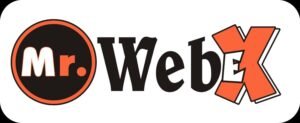SaaS means Software as a Service. Many businesses use it today. It lets people use software on the internet instead of on each computer. This makes work simple, costs less, and updates by itself. SaaS also helps businesses grow. Small or big, any business can use it. Learning about SaaS helps you pick the right tools, work better, and be ready for the future
In this article, we share easy-to-follow SaaS strategies for buyers and builders. You’ll learn how cloud software works, its benefits, challenges, pricing, and simple tips to grow your business
SaaS at a Glance
SaaS, or Software as a Service, is software you use on the internet instead of installing it on your computer. You open it in a browser and use the tools you need. This way is popular because it costs less, updates on its own, and works from anywhere. Small and large businesses use SaaS for email, accounting, and projects. It is easy to use, simple to change, and helps companies work well without high IT costs or difficult setups.
Core Characteristics of SaaS
SaaS is different from regular software. You can use it anywhere with the internet, so it is good for remote work and teams in different places. It updates by itself, so you always have the latest features and security. Instead of paying a lot at once, businesses pay a small fee each month or year. SaaS can grow with your business. You can add more users and tools as needed.
How SaaS Works
SaaS keeps software on cloud servers so you don’t have to install it on your computer. You can open it using a web browser or app. Businesses pay a monthly or yearly fee that covers updates, support, and maintenance. This makes it easy to start using right away. Companies can also add more users, storage, or tools when needed. This way, the business can grow without extra IT work or complicated setups
SaaS vs Traditional Software Models
SaaS is a type of software that runs on the cloud and comes with a subscription. Regular software goes on your computer and usually needs a one-time payment. With SaaS, businesses don’t pay a lot at first, get updates on their own, and can use the software from anywhere. Regular software gives more control but needs manual updates and IT work. SaaS is easy to use and can grow with your business, saving time and money.
SaaS vs PaaS vs IaaS
SaaS, PaaS, and IaaS are types of cloud services. SaaS gives software you can use online, like email or project tools. PaaS gives developers a platform to make apps without managing servers. IaaS gives companies virtual servers and storage so they can do everything themselves. SaaS is best for normal users. PaaS is good for developers. IaaS is for businesses that want full control. Pick the one that fits your needs, skills, and goals.
Benefits of SaaS Adoption
SaaS makes using software easy for all businesses. Companies do not need to put software on each computer or take care of it. Updates happen by themselves, which saves time and stops mistakes. SaaS works anywhere with the internet, so teams can work together simply. It does not cost a lot at first. Businesses pay every month or year instead of buying expensive software. As a business grows, SaaS can add more users, storage, or tools without extra work
8. SaaS Limitations & Challenges
SaaS has many benefits, but there are some challenges too. Businesses need the internet, so slow or no connection can stop them from using the software. Security and privacy are important because data is stored on cloud servers. It can be hard to change to a different provider. Some advanced features may be smaller than in regular software. Still, if businesses plan carefully and pick good providers, they can use SaaS safely
SaaS Pricing & Economics
SaaS pricing is simple and easy for businesses. Most companies pay every month or year instead of buying software one time. This helps them plan money and budgets. Some SaaS tools charge per user. Others charge for how much you use or the features you want. The subscription usually includes updates, help, and maintenance. Businesses also do not need to buy servers or hire IT staff. This makes software cheaper, easy to manage, and ready to grow with the business
The SaaS Business Model
The SaaS business model works with subscriptions. Companies pay every month or year to use the software. This gives steady income for the providers. SaaS can be for other businesses (B2B) or for individual users (B2C). Some providers let people sign up online, while others give personal help for big clients. This system also lets providers change the software, add new tools, and make it better as more people use it. It is simple and easy for everyone.
Key Metrics to Track
Tracking key numbers is important to see how well a SaaS business is doing. Monthly Recurring Revenue (MRR) shows the money coming in each month. Churn rate tells how many customers stop using the software. Customer Acquisition Cost (CAC) shows how much it costs to get a new customer. Customer Lifetime Value (CLV) shows how much money a customer brings over time. Looking at these numbers helps businesses make smart choices and grow without problems.
Implementation & Vendor Evaluation
Choosing the right SaaS and using it the right way is very important. Businesses should check that the provider is safe, gives help, and has simple rules. A plan for adding users helps teams start fast and avoid mistakes. It is important to connect the software with other tools so work goes smoothly. Companies should check security, who can see the data, and backups. Good planning helps SaaS work well, stay safe, and give the best results.
SaaS Security & Governance
Security and rules are very important for SaaS. Businesses must protect data with strong passwords, two-step verification, and correct access controls. Both the provider and the customer share the job of keeping data safe. Following rules like GDPR, HIPAA, and SOC 2 helps meet the law. Companies should also check where data is kept and have backup plans. Using these steps keeps data safe, lowers risks, and builds trust in the software.
SaaS Integration & Extensibility
SaaS works best when it can connect with other tools and systems. Businesses can use APIs, webhooks, and plugins to link SaaS to the software they already use. This helps data move smoothly and reduces extra work. Some SaaS platforms let you add new tools or change work steps without changing the main system. Good connections save time, make work easier, and keep everything working. Choosing software that is easy to change helps companies grow.
SaaS Use Cases & Industry Applications
SaaS is used in many parts of business. Companies use it for email, projects, money management, HR, and helping customers. Some tools are made for places like hospitals, banks, or online shops. Some SaaS shows a business its information and helps it make choices. Companies can use software, work together, and grow without buying expensive computers. It is easy, cheap, and works for all businesses.
SaaS Trends & Future Outlook
SaaS is growing fast and changing how businesses work. New tools use AI to help with tasks and decisions. Low-code and no-code platforms let anyone make apps easily. Product-led growth helps companies get new customers and keep them. Using more than one cloud and edge computing makes software faster and more reliable. SaaS will keep getting easier, safer, and smarter. This helps businesses do work faster, save money, and use new tools without buying costly computers.
Migration & Hybrid Adoption
Moving to SaaS can be simple if planned well. Companies can switch from old software to cloud-based SaaS step by step. Some keep some tools on their computers and move others to the cloud. Planning means moving data safely, teaching workers, and checking that systems work. A clear plan helps avoid problems and losing data. Using some local and some cloud tools lets businesses get SaaS benefits and keep important systems safe.
FAQs About SaaS
Many people have questions about SaaS. What is SaaS?
It is software you use on the internet instead of installing on a computer.
Is SaaS safe?
Yes, if you use strong passwords, two-step verification, and trust the provider.
Can small businesses use SaaS?
Yes, because it is cheap and easy to use.
What is the difference between SaaS, PaaS, and IaaS?
SaaS gives ready apps, PaaS helps make apps, and IaaS gives servers and storage. SaaS makes software simple and easy for everyone.
Conclusion
SaaS is changing how businesses use software. It works on the internet, is easy to access, and does not cost too much. This makes it good for small and big companies. Businesses pay a subscription, get automatic updates, and can grow easily with it. SaaS saves time and money. By learning what SaaS is and how it helps, companies can make better choices, work easier, and grow in a digital world.









